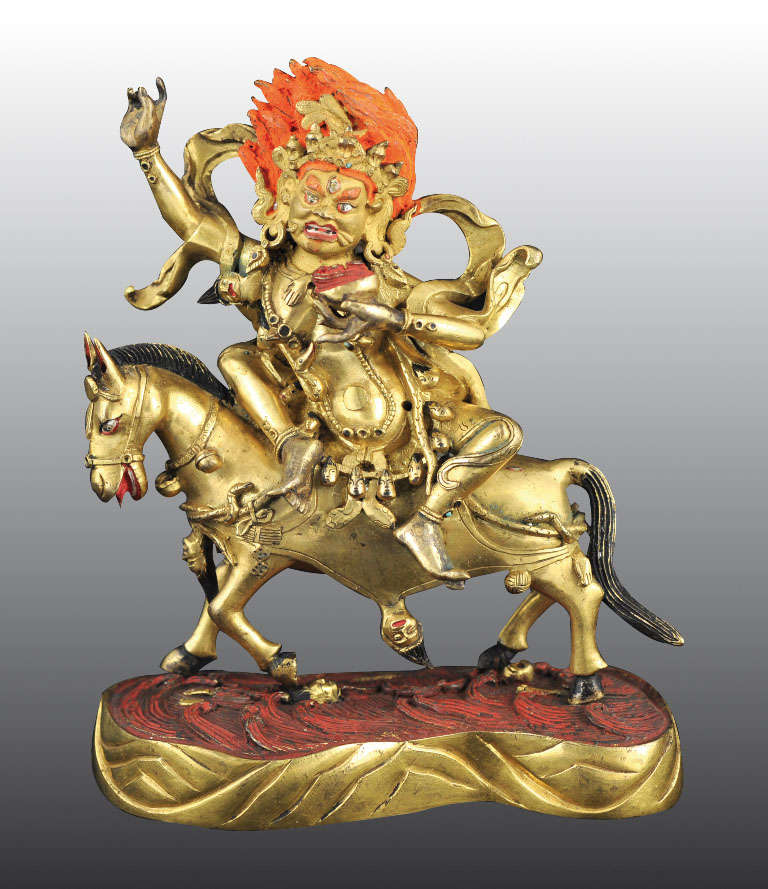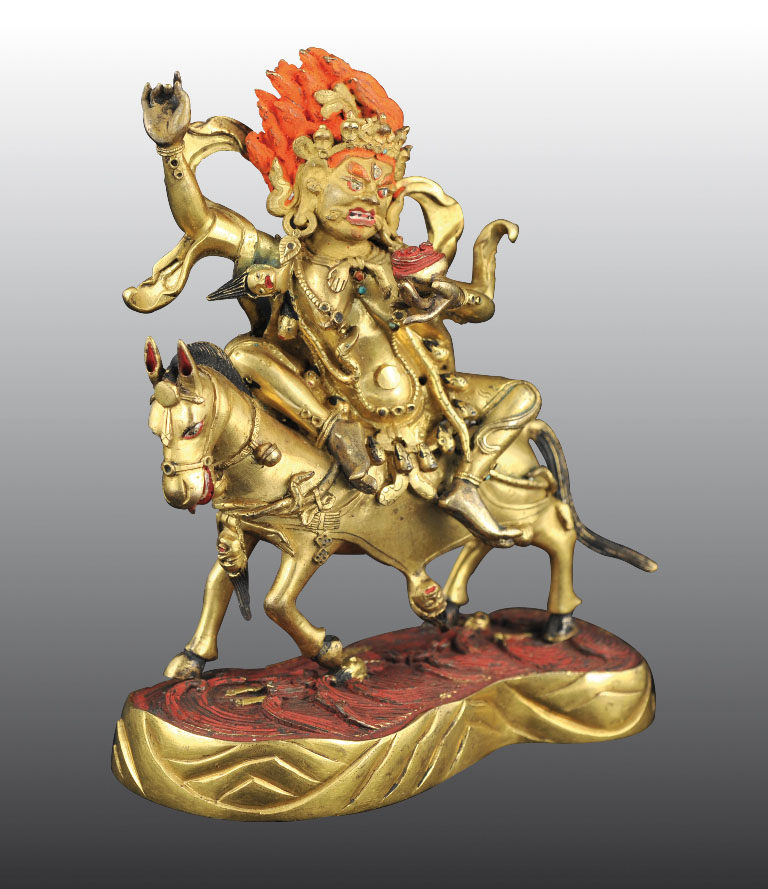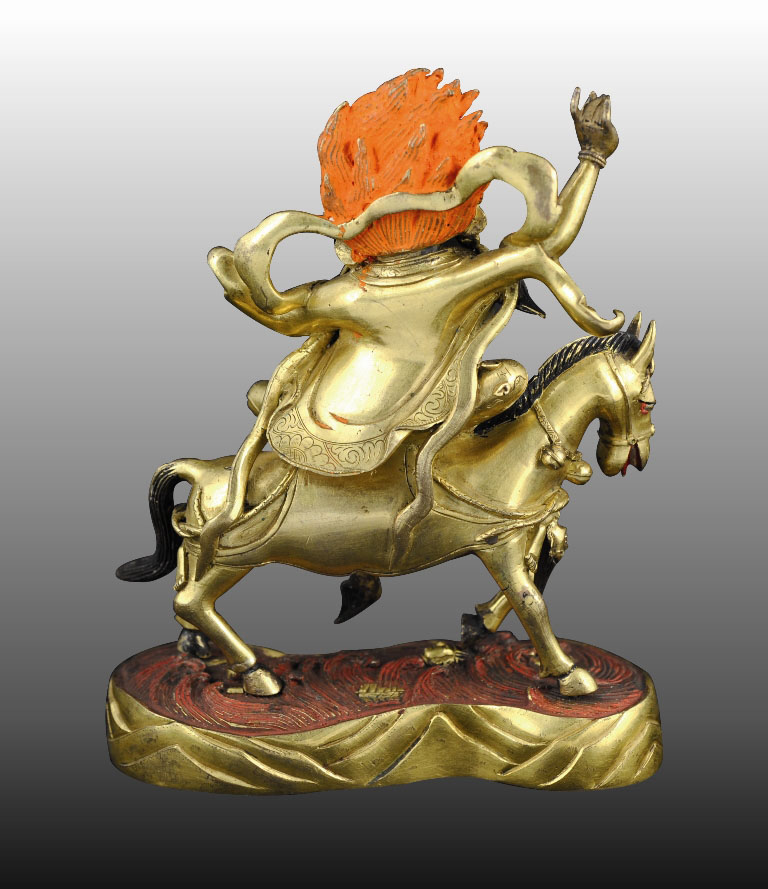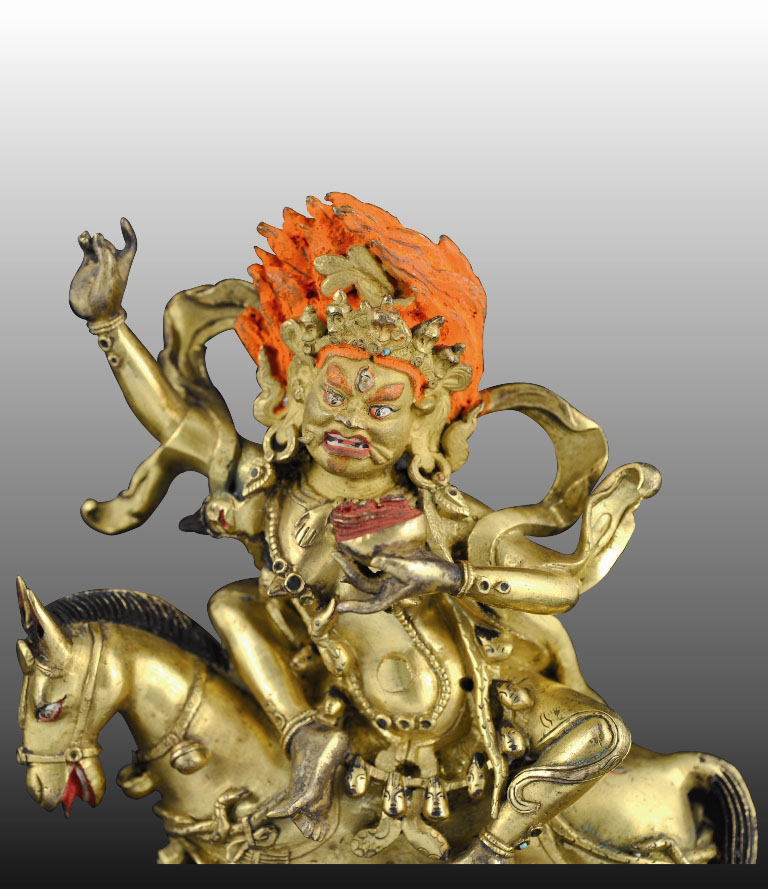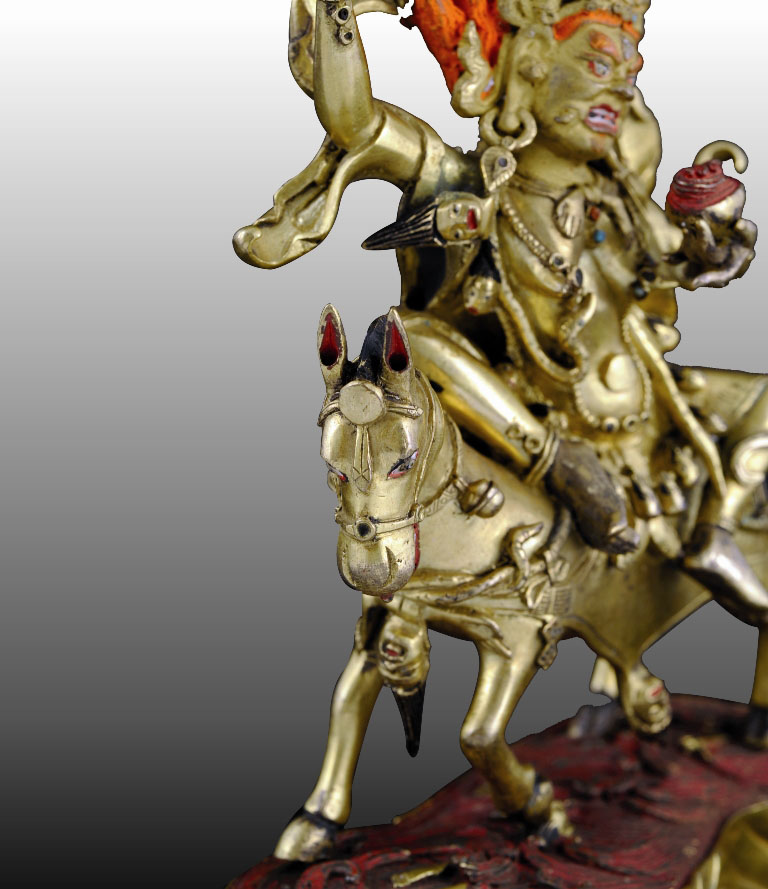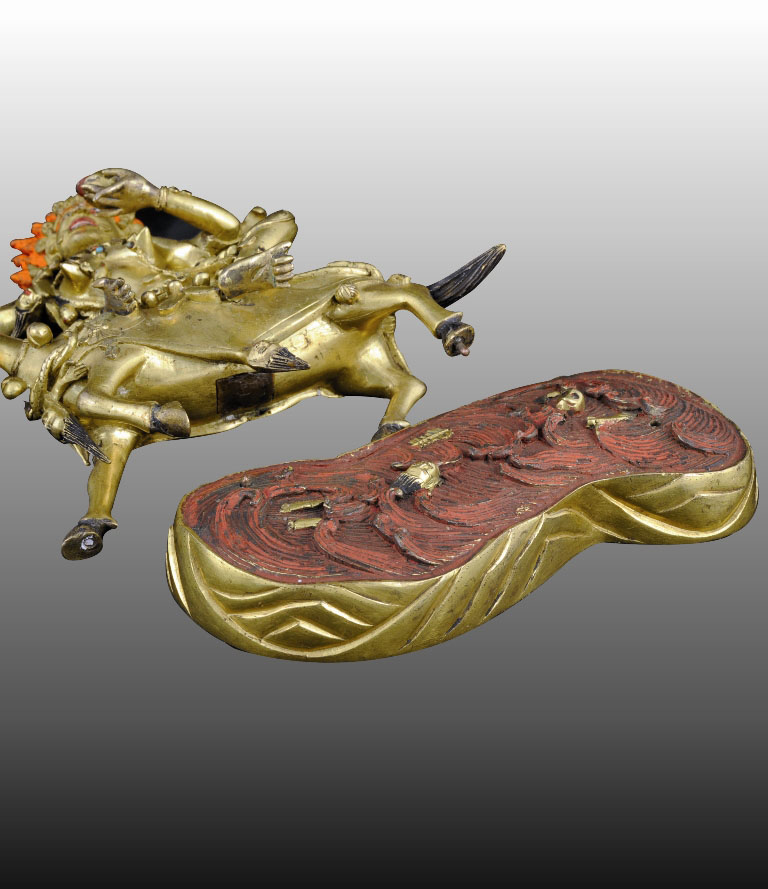|
|
«« go back
Shrîmatî
Tibet - Gild copper alloy - Height 18 cm - 18th century
Shrîmatî, or Rematî, in Tibetan Penden Lhamo (dPal-ldan lHa-mo translating the Sanskrit epithet “Shrî Devî”) is the Buddhist version of Kâlî, the wrathful aspect of Shiva’s consort. Originally Shrîmatî, according to Indian demonology, was an ogress who plagued the lives of children. The most famous, and oldest, treatise of Indian paediatrics, the Kumâratantra, states that she manifests her evil power on the seventh day, seventh month and seventh year of a child’s life, causing him or her to enter violently feverish states. Following her evil action, the child would show clear signs of illness: fragility, lack of appetite, alo- pecia, a weak voice. When Shrîmatî was converted and integrated into the Buddhist pantheon, she took on an appearance which is partly related to illness (1). In the Bud- dhist sphere Shrîmatî plays the role of protector of the doctrine and is often depicted with other protectors, like Mahâkâla for instance. Besides being patron of Tibet, she is also the Dalai Lama’s personal protector.
This image has iconographical traits of Indian origin, which are described in early sources. These include sagging breasts, an emaciated body and the macabre items she carries with her. The gold of her complexion replaces, as tradition permits, the usual sky-blue colour, evoking the ash produced from cremating human bodies with which the goddess, like tantric yogins, loves to smear herself. The crescent of a moon, a typically Shaiva symbol, can be made out amidst her flaming hair, surmounted by three peacock caudal feathers, whilst a solar disc is depicted above her navel. Her hair is framed by a diadem formed of human skulls which leaves her forehead clear, on which a third vertical eye stands out between her flaming eye- brows. A corpse is visible between the goddess’s open lips, torn apart by her canines. Shrîmatî wears a garment consisting in a tiger skin, the tail of which is visible upon her left knee. Her main attributes are the kapâla, a human skullcap used as a bowl, containing the blood of enemies of the doctrine that are symbolically killed, and a club, lost here, although the hole in which it was inserted is visible. A wooden abacus for counting transgressions is added to those attributes, as well as a magic ball of thread for snaring and blocking demons, dice used for diagnosis and divination, and a bag containing pestilences which, in a Buddhist context, allude to her ability to cure human beings of suffering. Shrîmatî rides sidesaddle on a mule characterized by an eye on her left buttock, seated on a saddle made from the skin of a flayed human being. The animal, wearing around her neck a garland of freshly severed heads similar to the one worn by the goddess, is depicted in the act of walking solemnly on a lake of blood surrounded by mountains of iron, where a human body can be glimpsed, appearing on the surface of the boiling waves.
(1) Giuseppe Tucci, Indo-Tibetica, III/2, Tsaparang, Delhi 1989, p. 97.
For a similar bronze figure : The Sacred Art of Tibet Robert A.F. Thurman- p.303 no.116 Expanded Edition
|
